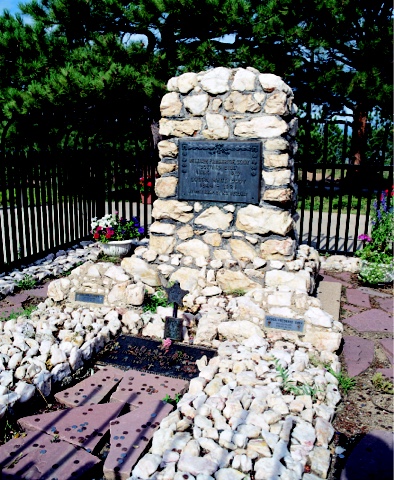Let the fact about this arch be known and unfurled
This is the only monument erected to the memory of war correspondents in the world.
“While researching Western Maryland for his novel Katy of Catoctin, George Alfred Townsend—the Civil War’s youngest field correspondent and one of the late 19thcentury America’s most important journalists and novelists—became captivated by beautiful Crampton’s Gap, site of a September 1862 Civil War battle. He purchased 100 acres on the ridge of South Mountain and built his estate. Townsend often wrote under the pen name “GATH,” which he derived from adding an “H” to his initials “G.A.T.,” and the estate is now Gathland State Park.
During the Civil War, Townsend reported on the events from the Union side. He covered the Peninsular Campaign in 1862; then lectured in Europe before returning to report the war’s end. A popular syndicated columnist and novelist, Townsend fashioned himself a renaissance man and was an unabashed self-promoter. Racehorses, pocketknives, a line of cigars as well as a post office all bore his pseudonym.
In establishing his estate, he included a monument to honor war correspondents, artists and photographers. The War Correspondents Arch—a monument 50 feet high and 40 feet across built in 1896—is a national historic monument administered and maintained by the National Park Service. Two buildings from Townsend’s estate survive and now serve as Gathland State Park’s museum. The museum features many artifacts from Townsend’s life, career and estate, as well as artifacts from the Battle of South Mountain.
Gathland’s pavilion is available for reservation by calling 888-432-CAMP or visiting http://reservations.dnr.state.md.us. Reservation cost is $76.36 per day.
War Correspondent Memorial Arch-Additional Information
The memorial arch at Gathland State Park was the last project Townsend constructed on his mountain estate. Entirely paid for through donations, the arch would cost about $5,000 or roughly $140,000 today. Several well known donors included American icons such as Thomas Edison, J.P. Morgan, and Joseph Pulitzer. Townsend designed the arch to his own specifications, influenced by the arch designs of the Baltimore and Oregon Railroad Station and the Antietam Fire Company Station No. 12 in Hagerstown, Md. He utilized different colored stones such as reddish brown sandstone, blue limestone, and red brick to give the arch eye catching color.
Townsend’s design symbolically emphasized the importance of the war correspondent. The ideas of “war,” “speed,” and “storytelling” are prevalent throughout the memorial. A Greek God statue of Mercury, the God of speed and messengers, is situated into the wall. Set into the stone are busts of horses to represent travel and busts of Greek Gods positioned with the words “Speed” and “Heed” to encourage fast communication and caution againstspreading inaccurate information. The three smaller arches above the main 16ft arch even represent the three main components of the war correspondent—description (the reporter), depiction (the illustrator), and photography (the photographer).
Additionally, there are inscriptions throughout the monument. Townsend included several biblical and literary quotes and inscribed the Battle of South Mountain’s date, “Sept 14, 1862” and the arch’s construction date, “1896,”onto the bottom corner. He also listed 157 names of notable civil war correspondents. He included not only northern newspaper reporters, illustrators, and photographers, but also several southern correspondents as well.
Shortly before his death, Townsend donated the Memorial Arch to the United States War Department, which would later transfer it to the National Park Service. It has since been rededicated several times to include all war correspondents, past and present, and is the only monument in the country dedicated to the courageous commitment of the war correspondent.
For more information, visit: http://dnr2.maryland.gov/publiclands/Pages/western/gathland.aspx



















































